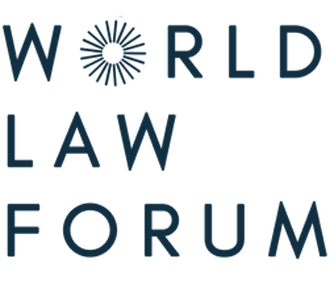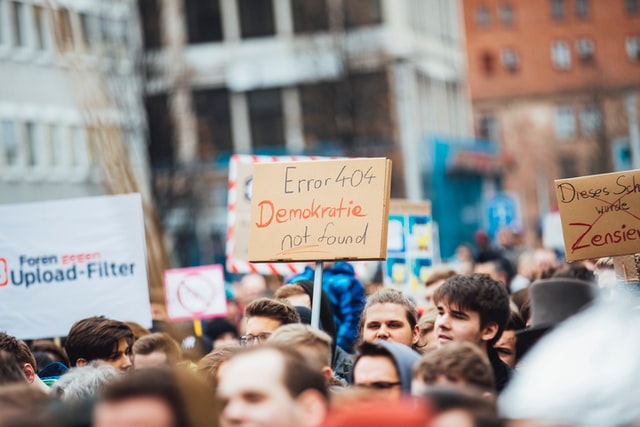
Tackling Online Harms: A Global Overview of Legal Challenges and Policy Developments
In the digital age, online harms – ranging from hate speech, cyberbullying, child sexual exploitation, and misinformation to algorithmic bias and surveillance – pose complex challenges to lawmakers, regulators, and courts around the world. The rapid expansion of social media, AI-driven content dissemination, and digital anonymity has outpaced traditional legal frameworks, compelling governments to craft novel legislation, collaborate internationally, and grapple with the balance between free expression and online safety. This article explores the global legal landscape governing online harms, tracing key policy developments, regulatory frameworks, landmark litigation, and emerging trends across jurisdictions.
I. Defining “Online Harms”
Online harms encompass a spectrum of detrimental content or conduct occurring on digital platforms, including:
– Illegal harms: Child sexual abuse material (CSAM), terrorism content, incitement to violence, cyberstalking, hate speech, doxxing, and revenge porn.
– Legal but harmful: Misinformation, disinformation, online harassment, body shaming, and content promoting self-harm.
– Systemic harms: Algorithmic amplification of harmful content, data misuse, and manipulation through bots or deepfakes.
The regulatory difficulty often lies in the second and third categories, where the harm is significant but the content remains within the bounds of free speech protections in many jurisdictions.
II. Global Regulatory Approaches
1. United Kingdom: Online Safety Act 2023
The UK’s Online Safety Act represents one of the most comprehensive regulatory frameworks globally. Key features include:
A duty of care on online platforms to prevent illegal and harmful content.
Specific obligations towards protecting children from harmful material.
Powers for Ofcom to fine non-compliant platforms up to 10% of global turnover.
Senior management criminal liability for persistent non-compliance.
Case Study: Molly Russell Inquest (2022)
The death of 14-year-old Molly Russell after viewing self-harm content on Instagram and Pinterest triggered significant public scrutiny. The inquest concluded that harmful online content contributed to her death, influencing the push for stricter laws.
2. European Union: Digital Services Act (DSA)
The EU’s Digital Services Act, enforced from 2024, applies a horizontal regulatory framework to digital intermediaries. Key provisions include:
– Obligations for Very Large Online Platforms (VLOPs) to assess and mitigate systemic risks.
– Transparency requirements for content moderation algorithms.
Independent audits and data access for regulators and researchers.
Case Study: Facebook & COVID-19 Disinformation
The EU Commission criticized Meta for failing to curb pandemic-related misinformation. Under the DSA, repeated failures to address systemic risks could lead to heavy penalties and service restrictions.
3. United States: Section 230 and Legislative Gridlock
The US relies on Section 230 of the Communications Decency Act, which provides sweeping immunity to online platforms for user-generated content. While foundational to internet freedom, it has come under bipartisan scrutiny.
Several proposed reforms include:
– The SAFE TECH Act, narrowing protections for paid content.
– The EARN IT Act, conditioning immunity on compliance with CSAM regulations.
– State-level initiatives, like Texas and Florida’s laws requiring platforms to justify content removal decisions—currently embroiled in constitutional litigation.
Case Study: Gonzalez v. Google (2023)
This Supreme Court case, stemming from a terrorist attack and YouTube’s algorithmic amplification of extremist content, raised questions about whether Section 230 shields platforms from liability for algorithmic recommendations. Though ultimately decided narrowly, it signaled potential cracks in the Section 230 edifice.
4. India: IT Rules 2021 and Intermediary Liability
India’s Information Technology (Intermediary Guidelines and Digital Media Ethics Code) Rules, 2021, impose compliance requirements on social media intermediaries and digital publishers. Key aspects include:
– Appointment of grievance and compliance officers based in India.
– Time-bound content takedowns.
– Traceability of originators of messages on encrypted platforms (e.g., WhatsApp).
Case Study: Twitter vs. Indian Government
In 2021–22, Twitter resisted takedown orders related to political dissent and farmers’ protests. Indian authorities responded by threatening criminal action. Eventually, Twitter complied under protest while challenging the constitutionality of certain orders in court.
5. Australia: Online Safety Act 2021 and the eSafety Commissioner
Australia’s Online Safety Act 2021 consolidates powers under a proactive regulatory framework led by the eSafety Commissioner. The Act includes:
– A “basic online safety expectation” (BOSE) for platforms.
– Mandatory takedown schemes for cyberbullying, adult cyber abuse, and image-based abuse.
– Penalties for non-compliance, including blocking access.
Case Study: Christchurch Terror Attack (2019)
Although occurring in New Zealand, the attack was livestreamed and widely shared on platforms accessible in Australia. This catalyzed global attention on content moderation failures and led Australia to introduce criminal liability for executives of platforms failing to remove abhorrent violent material.
III. Emerging Areas of Legal Concern
1. Algorithmic Bias and Amplification
AI-driven recommender systems increasingly come under scrutiny for disproportionately amplifying harmful or extremist content, polarizing discourse, or facilitating echo chambers.
For example, TikTok’s algorithm was found to promote content about eating disorders and self-harm to teenagers within minutes of signup (Wall Street Journal, 2021). Regulatory proposals such as the EU AI Act and DSA include obligations to mitigate algorithmic risk.
2. Children’s Privacy and Exploitation
Children are particularly vulnerable to online harms. Key legal developments include:
– The UK’s Age-Appropriate Design Code (Children’s Code), influencing global design standards for minors.
– California’s Age-Appropriate Design Code Act (2022).
– Increased enforcement under COPPA in the US (e.g., YouTube fined $170M in 2019).
Case Study: Instagram and Teen Mental Health (Facebook Papers Leak)
Internal research leaked by whistleblower Frances Haugen revealed that Instagram exacerbated body image issues among teen girls. This prompted calls for regulation and lawsuits by US states against Meta for allegedly misleading the public.
3. Cross-Border Enforcement and Jurisdictional Conflicts
Online content often transcends borders, complicating enforcement. Platforms may be subject to contradictory legal obligations (e.g., EU’s GDPR vs. US free speech norms). Geoblocking, data localization, and extraterritorial application of law are flashpoints.
Case Study: NSO Group and Pegasus Spyware
Although not a platform, the Israeli firm NSO Group faced lawsuits in US courts (e.g., by WhatsApp) for allegedly enabling governments to hack phones of journalists and activists. The case raised questions about jurisdiction, immunity, and human rights in cyberspace.
IV. Legal Challenges for Stakeholders
1. Balancing Free Speech and Content Moderation
Laws that mandate content takedown may conflict with constitutional protections, especially in the US and EU. Critics argue that vague definitions of “harmful content” can chill speech. Supporters counter that platforms already de-platform users arbitrarily, and regulation can provide procedural fairness.
2. Liability Standards and Safe Harbour
There is an ongoing shift from broad immunities to conditional safe harbour, especially for large platforms, akin to regulated utilities. The debate continues: Should platforms be “neutral conduits” or “publishers”?
3. Transparency and Accountability
Governments are increasingly mandating transparency in content moderation, advertising, and algorithmic decision-making – through “transparency reports,” audit trails, and data access for researchers. For example, DSA-mandated annual risk assessments by VLOPs.
However, while transparency is in the public’s interest, confidential business information should also be protected.
V. Future Directions and Policy Recommendations
1. International Harmonization
Given the borderless nature of online platforms, multilateral cooperation – through bodies like the OECD, G7, or the Global Internet Forum to Counter Terrorism (GIFCT)—is essential.
Proposals like the Christchurch Call and Voluntary Principles to Counter Online Abuse and Harassment aim to standardize approaches.
2. Risk-Based and Proportionate Regulation
Legal frameworks should adopt a tiered approach – imposing stricter duties on platforms with greater reach or risk profiles while avoiding burdening startups or non-profits.
3. User Empowerment and Digital Literacy
Laws should prioritize user control, platform accountability, and digital resilience, especially for marginalized or vulnerable users. Mandatory opt-in for algorithmic feeds, age verification, and increased investment in media literacy could be part of a sustainable solution.
Conclusion
The regulation of online harms lies at the heart of 21st-century governance. As societies digitize further, the legal system must evolve to protect rights and prevent abuse – without sacrificing the freedoms that underpin democratic discourse. The global legal landscape is moving towards greater accountability, transparency, and responsibility from online platforms. Yet, challenges remain, from balancing free speech and censorship to enabling cross-border enforcement. Through nuanced, evidence-based policymaking and international cooperation, a safer and fairer digital ecosystem is possible.
The Global Consequences of the U.S. Withdrawal from WHO Pandemic Response Reforms
The COVID-19 pandemic exposed deep vulnerabilities in the world’s preparedness and ability to resp
Tackling Online Harms: A Global Overview of Legal Challenges and Policy Developments
In the digital age, online harms – ranging from hate speech, cyberbullying, child sexual exploitat
The role of impartial reporting in upholding democratic processes
According to Freedom House, political rights and civil liberties have seen a decline in democracies








Post a comment